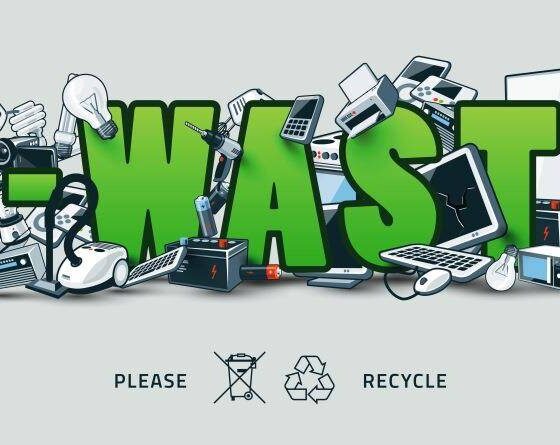

Environment
Electronic Waste: The New Resource You Need To Know About
As we strive to protect the environment, we must address all known risk factors. Unfortunately, the number of problems that we are facing is rising.
We dedicate most of our time talking about energy efficiency, oil contamination, and other popular environmental issues. However, there are some overlooked problems that deserve more attention. One issue that must be evaluated is the rising risk of electronic waste.
Electronic Waste is a Growing Threat to Our World
As one of the fastest growing waste streams on the planet, e-waste is the toxic legacy of our digital age. In 2018 alone, it was estimated that some 49 million metric tons of e-waste was generated, and that number looks set to grow exponentially as we continue to celebrate the transformative power of technology in the coming decades. In fact, if the much-hyped Internet of Things gains mass adoption, by 2025 we could realistically be looking at another 22 billion devices to add to the 4.8 billion smartphones currently in circulation.
The numbers are truly staggering, and sadly, thanks to the myriad complexities of device design and composition, recycling electronic waste is challenging. Devices contain multiple materials that defy easy separation; they contain toxic chemicals and non-recyclable plastics, rare earth elements such as neodymium, gadolinium and praseodymium, they also contain precious metals such as gold, silver, platinum, and palladium. Put simply, recycling e-waste is costly, time-consuming, and often polluting—requiring complex processing techniques during separation that rely on toxic chemicals.
Changing Perspectives – E-waste as a Commodity
If we are able to change our “throw-away” culture and look at e-waste as a commodity in itself, it is clear that we are taking an important new resource for granted. E-waste recycling must improve. It must not only reduce the amount of trash sent to landfill, but also ensure we do not deplete our natural resources through mining. Today, there are a number of innovative approaches that highlight e-waste as a golden economic opportunity that may simultaneously reduce the toxic burden on our planet.
E-waste “mining” is seen as particularly lucrative, with the precious metals in circuit boards more concentrated than even the most productive mines. However, most current techniques require nitric and hydrochloric acid that ensures the process is highly toxic. Today, however, a number of innovators have researched and designed safer ways to separate precious metals from circuit boards.
Including machine-based methods that require no chemical based-stripping techniques in order to depopulate circuit boards, alongside other techniques that rely on hot water or simply air blasting, the e-waste recycling industry is beginning to develop more sustainable strategies for the removal of precious metals. Many of these new techniques include the added bonus of not polluting the metals in question, ensuring no further refining is required. Once removed from the board, metals are usually sold on to metal dealers and may once again be used in new devices. Alternatively, they might just make an appearance at the next Olympics.
Ensuring a Circular Economy for E-Waste
The fact of the matter is clear; E-Waste is not waste at all but a valuable commodity that we must begin to appreciate, and much like our other waste streams, we must also ensure it fits within the waste management hierarchy to reduce, reuse, and recycle. In order to use this new resource to its full potential, changing the way we consume electronics must also be a priority.
Today, the concept of modular electronics is being proposed as an alternative to the current way we consume, and modular smartphones are already available on the market. Modular devices allow users to swap out older components for new ones, keeping valuable resources in use for longer. This kind of approach, when paired with more efficient recycling techniques is the only way we can realistically reduce the amount of e-waste that goes to landfill.
Finally, ensuring that devices remain in use while they are still functional is another important piece of the puzzle. Older devices that are no longer wanted by western consumers may still serve a purpose in developing countries where accessing the latest tech is impossible. However electronics are reused or recycled, we must now begin to see the potential in what was formerly considered waste. In truth, it is the only way we will reduce the billions of tons of e-waste that will soon be circling the globe.
Tackling Electronic Waste is Key to Saving the Planet
Electronic waste is a growing problem that is threatening the world. We must take all measures to keep it in check. Are we ready to make the changes needed to stop it from polluting our world?


 Environment10 months ago
Environment10 months agoAre Polymer Banknotes: an Eco-Friendly Trend or a Groundswell?

 Environment11 months ago
Environment11 months agoEco-Friendly Home Improvements: Top 7 Upgrades for 2025

 Features9 months ago
Features9 months agoEco-Friendly Cryptocurrencies: Sustainable Investment Choices

 Features10 months ago
Features10 months agoEco-Friendly Crypto Traders Must Find the Right Exchange



























